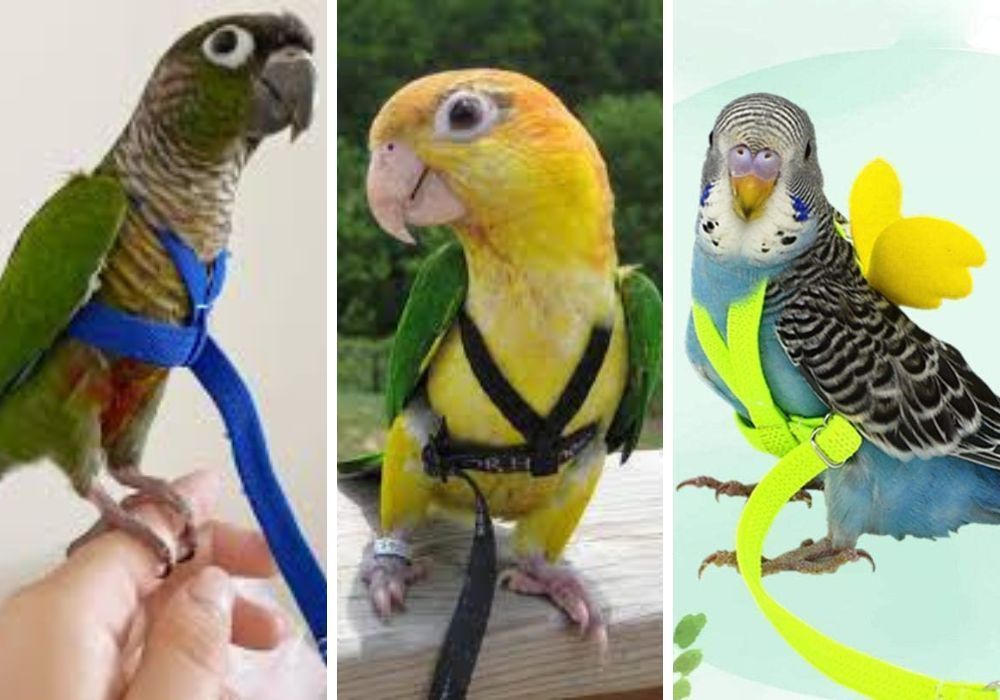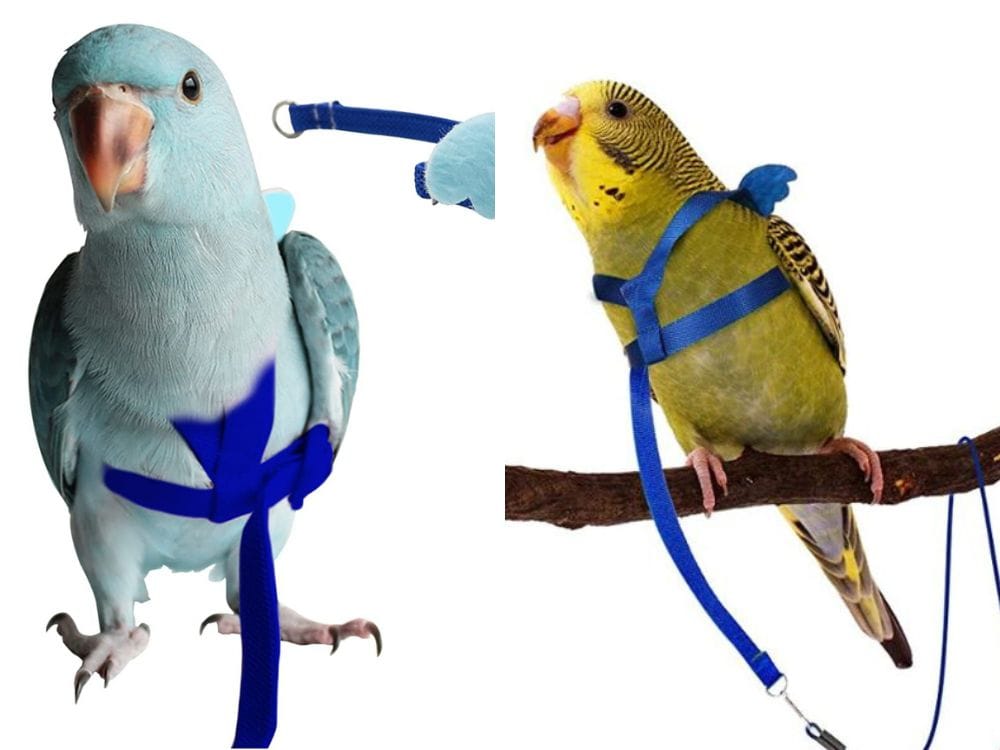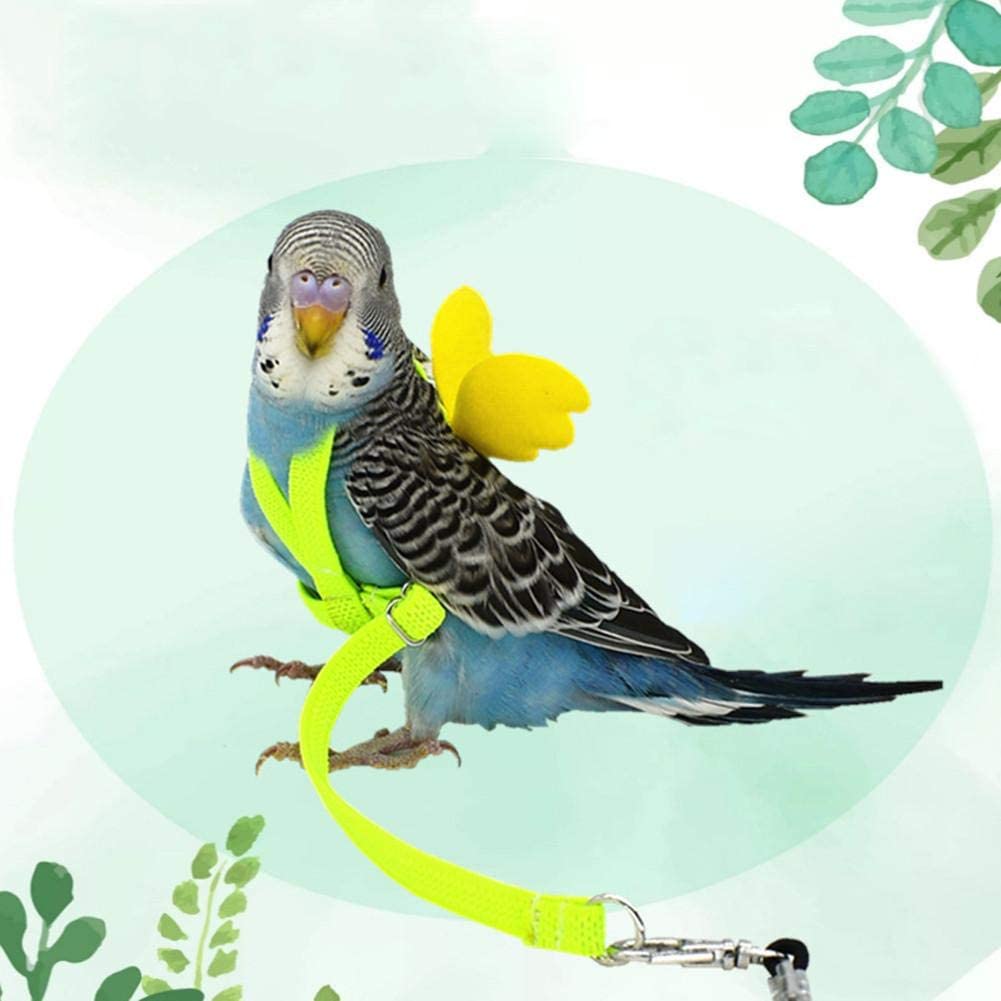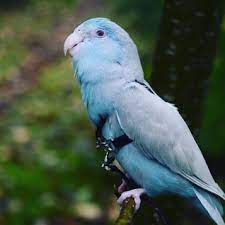Parakeet Leash: Training Your Parakeet to Wear a Leash!
There are a lot of reasons why training your parakeet to wear a leash can be really beneficial. Either way, we are going to show you how.

Key Takeaways:
- Training your parakeet to wear a leash can enhance their outdoor experience safely.
- Patience and consistency are crucial for successful leash training.
- Choosing the right bird harness is essential for your parakeet's comfort and safety.
Introduction to Parakeet Leash Training
Training your parakeet to wear a leash can open up a world of outdoor adventures for your feathered friend. Whether you have parakeets, cockatiels, or conures, an aviator harness can provide a safe and lightweight solution for taking birds outdoors. The cute wing design features make bird harnesses visually appealing and suitable for small birds. This guide will walk you through the steps to successfully train your parakeet to wear a leash, ensuring a fun and secure experience for both of you.
Choosing the Right Bird Harness
When selecting a bird harness, it’s important to choose one that fits your parakeet comfortably and caters to the needs of different bird species, including parrots. The Aviator Bird Harness is a popular choice among bird owners due to its lightweight design and secure fit. It’s available in various sizes, so make sure to measure your parakeet accurately to find the perfect fit.
Rope straps are essential components for outdoor bird training and flying activities, emphasizing their durability and adjustable features for safe handling.
A well-fitted harness should not be too tight or too loose. It should allow your parakeet to move freely without causing any discomfort. Look for harnesses with adjustable straps and soft materials to ensure your bird’s comfort during outdoor activities.

Introducing the Harness to Your Parakeet
Before you start training, let your parakeet get familiar with the harness. Place it near their cage or play area and allow them to explore it at their own pace. This will help reduce any fear or anxiety they may have about the new item.
You can also use positive reinforcement to create a positive association with the harness. Offer treats or praise whenever your parakeet shows interest in the harness. This will make them more willing to accept it when it's time to put it on.
Getting Your Parakeet Comfortable with the Harness
Once your parakeet is familiar with the harness, it's time to start getting them comfortable wearing it. Begin by gently placing the harness on their back without fastening it. Allow them to wear it for short periods, gradually increasing the duration as they become more comfortable.
During this process, it's important to remain calm and patient. Your parakeet may resist at first, but with consistent training and positive reinforcement, they will eventually get used to wearing the harness.

Securing the Harness Properly
When your parakeet is comfortable wearing the harness, it's time to secure it properly. Make sure the straps are snug but not too tight, and check that the harness is not causing any discomfort. The Aviator Bird Harness is designed to distribute pressure evenly, reducing the risk of injury.
Always double-check the harness before taking your parakeet outside. Ensure that all straps are secure and that the harness is fitted correctly. This will prevent any accidents and keep your parakeet safe during outdoor activities.
Introducing the Leash
Once the harness is securely in place, you can introduce the leash. Start by attaching the leash to the harness and allowing your parakeet to get used to the sensation of being on a leash. Let them walk around indoors with the leash attached, gradually increasing the length of the leash as they become more comfortable.
It's important to supervise your parakeet closely during this stage. Make sure they don't get tangled in the leash or become frightened. Use treats and praise to encourage positive behavior and make the experience enjoyable for your parakeet.

Taking Your Parakeet Outside
When your parakeet is comfortable with the harness and leash, it's time to take them outside. Choose a quiet, safe area for their first outdoor adventure. Avoid busy or noisy places that could overwhelm your parakeet.
Keep the initial outdoor sessions short and gradually increase the duration as your parakeet becomes more confident. Always keep a close eye on your parakeet and be prepared to bring them back inside if they show signs of stress or discomfort.

Ensuring Safety During Outdoor Activities
Safety should always be your top priority when taking your parakeet outside. Make sure the harness and leash are secure and that your parakeet is comfortable. Avoid areas with potential hazards, such as busy roads or places with predators.
It's also important to be mindful of the weather. Avoid taking your parakeet outside in extreme temperatures or during inclement weather. Always provide plenty of water and shade to keep your parakeet comfortable during outdoor activities.
Building Trust and Confidence
Training your parakeet to wear a leash is not just about the physical process; it's also about building trust and confidence. Be patient and consistent with your training, and always use positive reinforcement to encourage good behavior.
Remember that every parakeet is different, and some may take longer to adjust to the harness and leash than others. Be patient and understanding, and celebrate small successes along the way.
Common Challenges and Solutions
Training your parakeet to wear a leash can come with its challenges. Some parakeets may be more resistant to the harness, while others may become frightened or stressed. It's important to address these challenges with patience and understanding.
If your parakeet is resistant to the harness, try breaking the training into smaller steps. Allow them to get comfortable with each step before moving on to the next. Use treats and praise to encourage positive behavior and make the experience enjoyable for your parakeet.
Benefits of Leash Training
Leash training offers numerous benefits for various bird species, including parrots and your parakeet. It allows your parakeet to enjoy the outdoors safely, providing them with mental and physical stimulation. It also strengthens the bond between you and your parakeet, as you spend quality time together during outdoor activities.
Additionally, leash training can help prevent behavioral issues that may arise from boredom or lack of exercise. A well-exercised parakeet is a happy and healthy parakeet.
Summary
Training your parakeet to wear a leash can be a rewarding experience for both you and your feathered friend. By choosing the right harness, introducing it gradually, and using positive reinforcement, you can help your parakeet enjoy the outdoors safely. Remember to be patient and consistent, and always prioritize your parakeet's comfort and safety.
FAQ
Q1: How long does it take to train a parakeet to wear a leash?
A1: The training duration can vary depending on your parakeet's personality and previous experiences. Some parakeets may take a few days to get comfortable with the harness, while others may take several weeks. Patience and consistency are key to successful training.
Q2: Can I use any type of harness for my parakeet?
A2: It's important to choose a harness specifically designed for small birds like parakeets. The Aviator Bird Harness is a popular choice due to its lightweight design and secure fit. Avoid using harnesses that are too heavy or not adjustable, as they can cause discomfort or injury.
Q3: What should I do if my parakeet becomes stressed during training?
A3: If your parakeet shows signs of stress, such as flapping their wings excessively or trying to remove the harness, take a step back and give them some time to relax. Break the training into smaller steps and use treats and praise to create a positive association with the harness. Always prioritize your parakeet's well-being and comfort during training.
Are you looking for a leash for your feathered friend? We have done all the research for you and put together our list of best 5 parakeet leashes you can buy today! Tap the link below now to see the full list!

